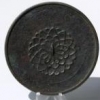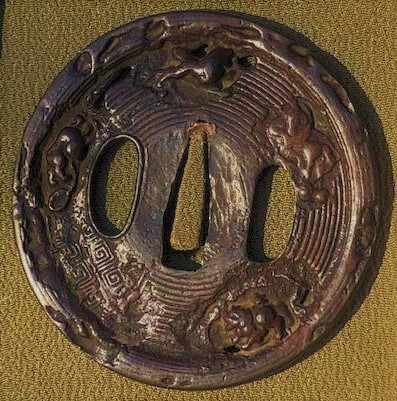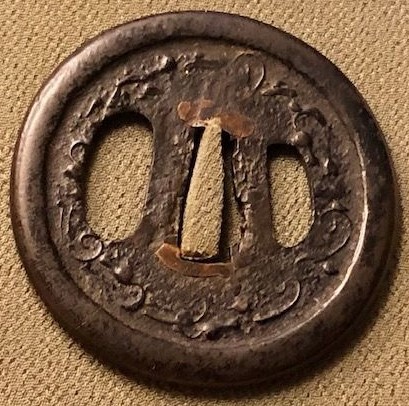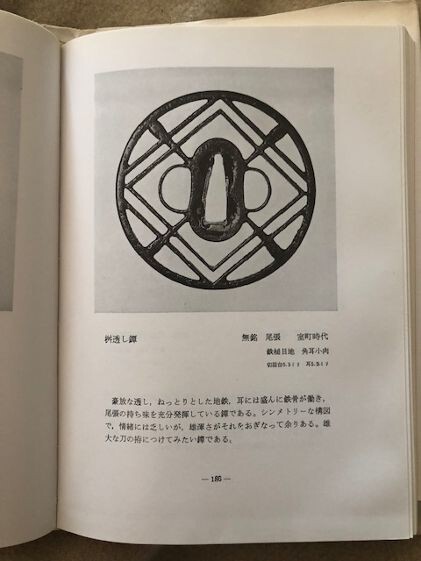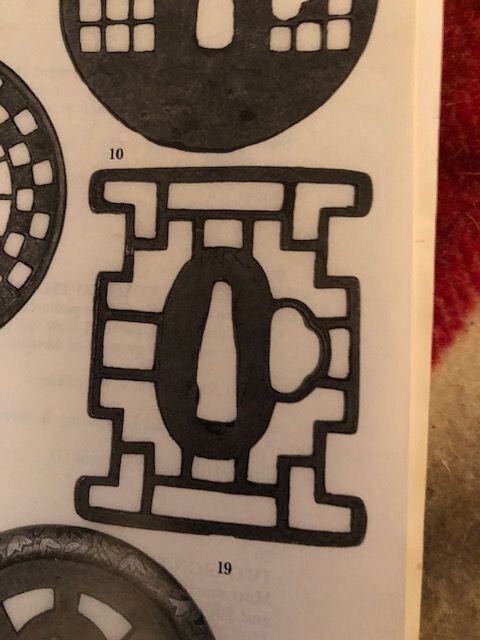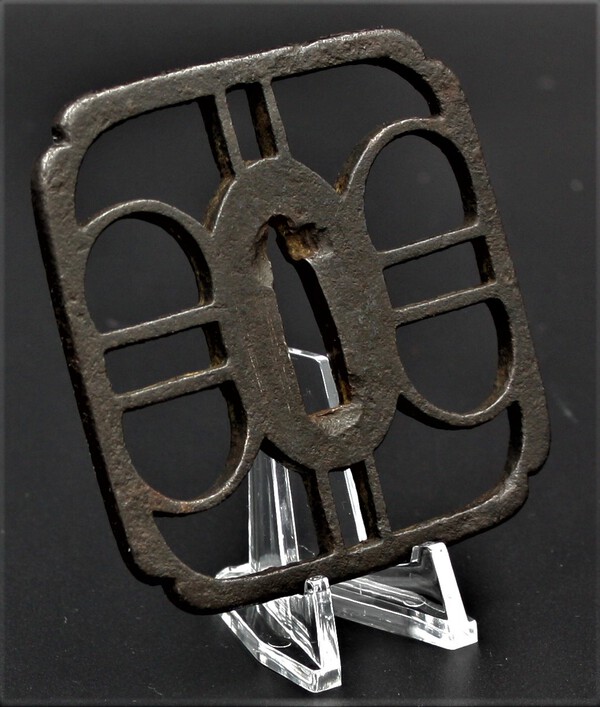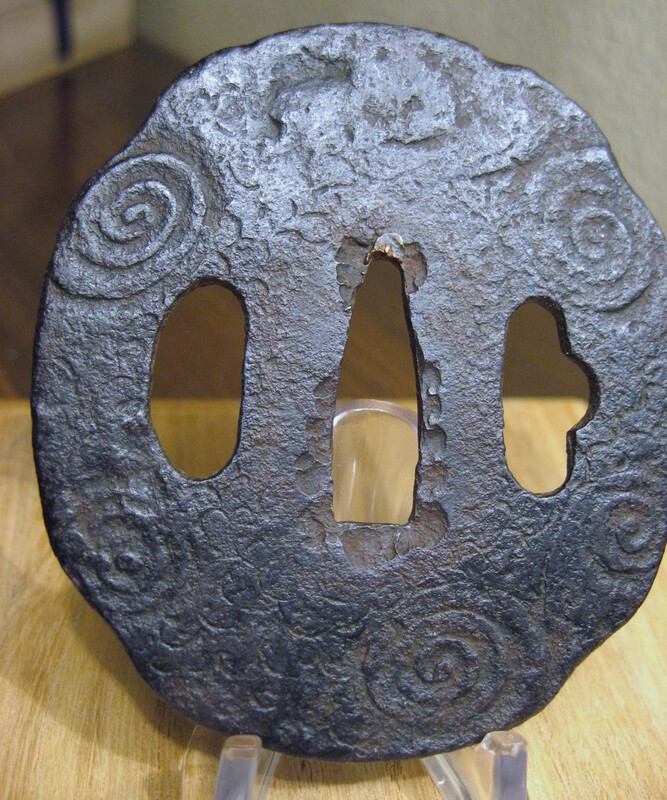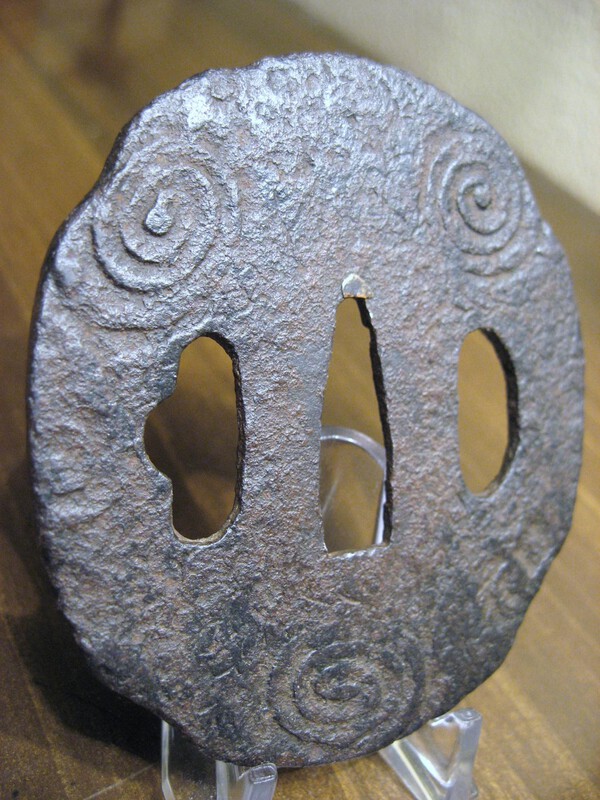-
Posts
290 -
Joined
-
Last visited
Content Type
Profiles
Forums
Events
Store
Downloads
Gallery
Everything posted by johnnyi
-
If you are serious about learning patinating of a damaged tsuba you might consider buying Gunsaulus's book, "Japanese Sword Mounts In The Field Museum". John
-
edit I think crossed rings. Grev, you owned an Umetada with the two crossed (single line) "wa" (for sale now in the for sale section. Circle enso maybe? John
-
Before reading your link Raymond, and recognizing the flute, I would have attributed the influence of your beautiful menuki to Lao Tsu. Maybe indirectly the Buddhist story evolved from Tao? At any rate your link is absolutely beautiful and very moving, and has illuminated not only a specific element of my tsuba, but has provided more "subject ,matter" to be on the lookout for. Thank you again! John
-
I love this Raymond, thank you for sending it. A wonderful link John
-
Here's another Kagami-shi tsuba. This one is unusually large at 76.8 mm. If you notice the ox at "9 o-clock", he is resting on the Buddhist lariat. He is not tethered however , but instead is resting upon the rope (which extends both in back and in front of him) . I've found this to be a recurring element in several Kagami-shi pieces of Muromachi period, some of which show the un-tethering more clearly. It may be a symbol of a peaceful interaction between man and nature. I don't know. Thanks for looking John
-
Alex, I miss the days we would have to jump for flying tarts john
-
Hello. So many nice pieces here! This is one of my best ones; Kagami-shi, possibly pre-Muromachi, ex Kolecki Regards, John
-
Regarding your question about different color of brass for vines and leaves, it is the same brass, only different states of polish. If you look at some of the leaves on the borders you'll find that a single leaf is in both shades, a result of more wear on the edge. regards, John
-
Although it appears to be a broken axe handle, is it possible I wonder if there might be some thunder to the axe? John
-
Hi. I've tried the woodshed thing and it's been a year and a half with nominal results. There's the old composted manure pile with a bag of sulfer yet to try. Besides using some pretty dangerous chemicals, that's all I got. Good luck John
-
-
Thank you Christian! You are a wealth of information delivered in the most enjoyable fashion always! Awa-Shoami it is, which makes sense considering the price I paid for it. Thank you heartily! John
-
For what it's worth, the udenuki ana look punched and chisselled to me in tbe old way. It does look cheap; maybe later Satsuma, or should the Uduki ana be smaller and on the side?? Also the chisselling on the nakago ana is on the wrong side is it not? regards, John
-
Towa f. kitajimi D: ca. 1800
-
I tore the store room apart and found the catalogue (Christie's Caldwell 1994) and confirmed my memory stinks! The tsuba which I had particularly remembered was this one which seems to have some similar features, NBTHK Tokubetsu kicho paper certified as Heianjo 16th century. I like the idea of Ko-Shoami and thank you both for that. Regards, John
-
Hi Ken, thanks and yes I understand tosho . A Christie's auction some years ago had offered several of these early sukashi types as being tosho, and one I believe to be ko. I will make another attempt to dig the catalogue out of my unorganized mess. I had considered Owari , but is not the thicker seppa dai contrary to owari? I don't know. Thanks again, John
-
Hello members. I had thought possibly tosho, but I seem to remember this design being also attributed to another school. Any help with identifying tsuba would be gratefully appreciated. Thanks in avance. Tsuba seems to be natural black patina with old accumulations on walls. The surface is hammered with visible layering on the edges. Tsuba measures roughly 73.6 mm high by 72.9 mm wide. Edge measures roughly 3.4 mm thick and seppa dai measures 4.3 mm thick. Regards, John
-
Ha, cheers back Christian. I don't want to highjack the thread with my submission (substitute until a iron "real ko" appears), but if you have some ideas please do message me. Regards, John
-
Addition (poor) photo of what appears to be Kanji on face, compared to photo of blank verso regards, John
-
Bazza, the photos I had sent to Robert were poor, and it may be that these "scratches" were not visible or at least as obvious to him or there was no need to mention. At first I wrote them off as some attempt to perhaps anchor a floating seppa, but since abandoned that thought. They only exist on one side. I have attempted to study them myself, but they are very weak, with mostly the vertical lines visible and the horizontal etc. almost invisible. I too believe it is Kanji and it is relatively complex. Unfortunately my own photos do not show the quality of the plate which is the finest I have. I will attempt in the next few days to take some better photos using cross lighting which might bring out the pattern at least, with which to compare to Myoju or another maker. Thanks for noticing this. While we are asking for examples, is it possible that you, or anyone else might have access to decent photos of Myoju's kanji on an actual tsuba? Thanks
-
Hi Grev, I don't have a papered example, but as no one has yet responded I'll post my tsuba which Robert Haynes has attributed to Ko Umetada. It is iron, convex, with remants of red lacquer overall (not visible in photo) and has a tiny remnant of gold on the face. I think it is remarkable how we often forget that these early tsuba were often lacquered, as they must have been stunning, not onlike the Grecian marbles which we have learned were often painted as well. Good luck finding a papered example. You are prompting me to send mine in for paper. Kind regards, John p.s. I apologize for the horrible photo which does not illustrate the silkiness of the surface
-
Hi Roger. Your tsuba looks nicely carved to my eyes, and I too hope someone can give some hints as to why this would be 1850's. Good luck! Johnnyi
-
Hi Robert. I don't know the answer to your question but I think your tsuba is interesting. The cross hatching on the seppa dai was to hold silver, a bit of which is still there? The terminal ends of the mimi seem to be ginkgo leaves, maybe a clue? The way a couple of petals were chopped by the hitsu ana make it seem that they might have been added later?? Good luck and I hope someone has answers. I'm still trying to figure out what it is. Regards, Johni
-
6


